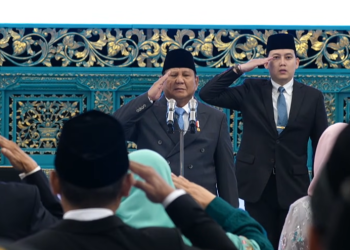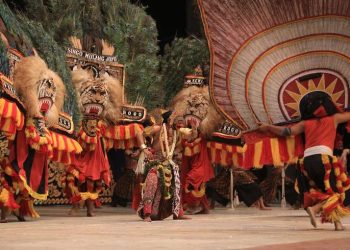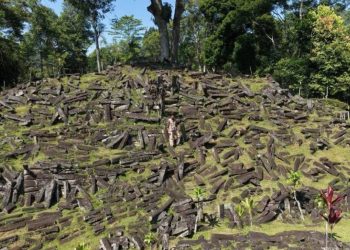Bali, Indonesia Sentinel — Perched on the tranquil edge of Lake Batur in Bali, Trunyan Village is home to an extraordinary burial tradition that sets it apart from the rest of the island. This indigenous community, known as the Bali Aga, practices an ancient funeral rite involving the placement of bodies above ground under a sacred tree called taru menyan. This unique custom reveals the profound connection the Bali Aga people maintain with nature and their ancestral heritage.
The Bali Aga and Their Timeless Customs
Believed to be Bali’s original inhabitants, the Bali Aga have preserved traditions predating the Hindu Majapahit influence. Trunyan’s burial practices are a testament to their commitment to their ancestral way of life, emphasizing harmony with the natural world.
In Trunyan, the deceased are laid to rest above ground if they pass away from natural causes—a condition known locally as sema wayah. The body is ceremonially washed, dressed in fresh clothing, and placed in the village’s sacred burial area, the sema wayah. There, the corpse is left exposed to the open air, shielded only by a bamboo structure known as ancak saji.
The Role of the Taru Menyan Tree

Central to this ritual is the taru menyan tree, a massive and ancient species native to the area. This tree emits a fragrant aroma that neutralizes the scent of decomposition, allowing the bodies to decay naturally without disrupting the surrounding environment. The name “Trunyan” itself derives from taru (tree) and menyan (fragrance), reflecting the tree’s spiritual significance to the community.
The use of the taru menyan tree underscores the Bali Aga’s respect for nature and their belief in the interconnectedness of life and death. For them, returning to the earth in this way fulfills a sacred cycle that honors both their ancestors and the environment.
Ritual Variations and Restrictions
The Trunyan burial ritual is reserved for specific circumstances. Those who die from unnatural causes, such as accidents or disease, are buried in a separate area called sema bantas. Infants and young children are interred in a different burial ground, the sema muda. These distinctions reflect a nuanced understanding of death and its spiritual implications within the Bali Aga belief system.
Spiritual Foundations
The people of Trunyan view their burial traditions as a bridge between the physical and spiritual worlds. They believe the spirits of the deceased remain near the village, protected and honored by the taru menyan. Ritual offerings and prayers are regularly made to these spirits, reinforcing the connection between the living, the departed, and the divine.
This practice reflects the Balinese philosophy of tri hita karana, which emphasizes harmony among people, the environment, and God. For the Bali Aga, these burial rites are an essential means of maintaining spiritual balance.
Finger Cutting of The Dani Tribe: Pain, Grief, and Heritage!
A Cultural Legacy
Trunyan’s burial customs have attracted interest from anthropologists and tourists alike. While the village welcomes visitors, the Bali Aga impose strict rules to preserve the sanctity of their traditions. Guided tours allow outsiders to observe and learn about these practices without intruding on the community’s sacred space.
Challenges in Modern Times
As modernization and tourism increase, the Bali Aga face challenges in preserving their unique cultural identity. The influx of visitors and exposure to outside influences pose risks to the authenticity of their rituals. To address these concerns, the community carefully regulates tourism and prioritizes cultural education.
Environmental preservation is another challenge. Maintaining the cleanliness and integrity of the burial site requires ongoing effort, as the Bali Aga strive to protect their sacred space from pollution and degradation. These efforts highlight their deep commitment to both their heritage and the natural world.
Conclusion
The burial traditions of Trunyan Village provide a rare and intimate look into an ancient way of life that cherishes harmony with nature and reverence for the divine. For the Bali Aga, these rituals are not merely customs but a profound expression of their identity and spiritual philosophy.
In a rapidly globalizing world, the preservation of Trunyan’s cultural heritage serves as a poignant reminder of the value of living in harmony with the earth and honoring the cycle of life and death. By sharing their story, the Bali Aga inspire us to reflect on our own connections to nature, tradition, and the human experience.
(Becky)
























